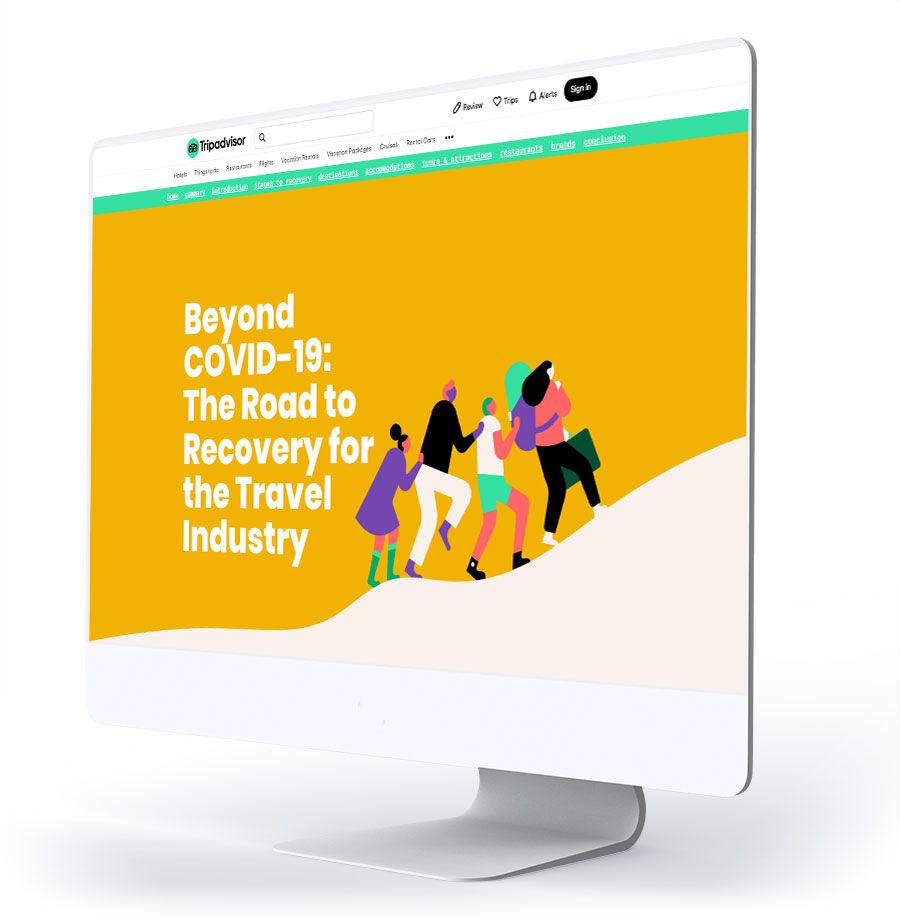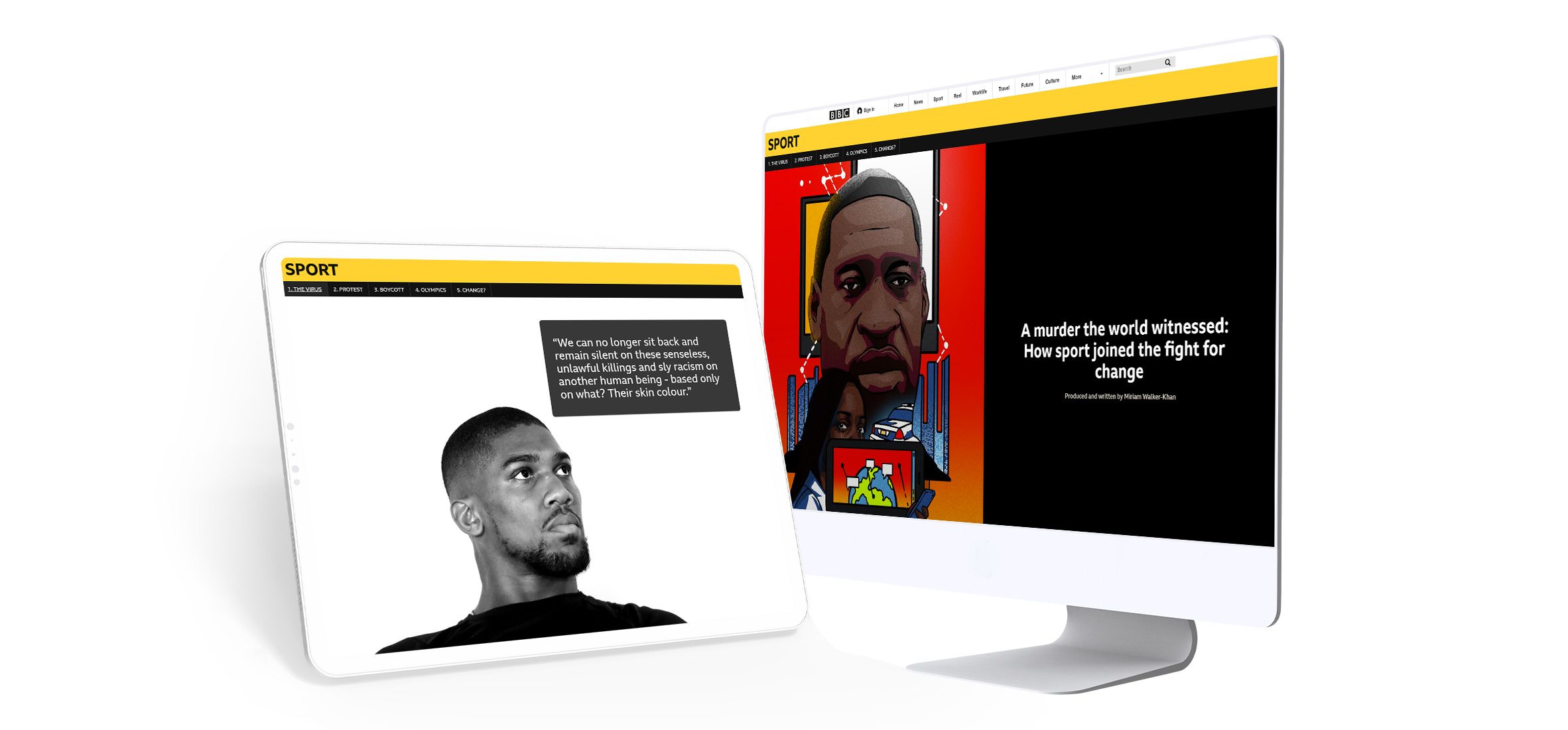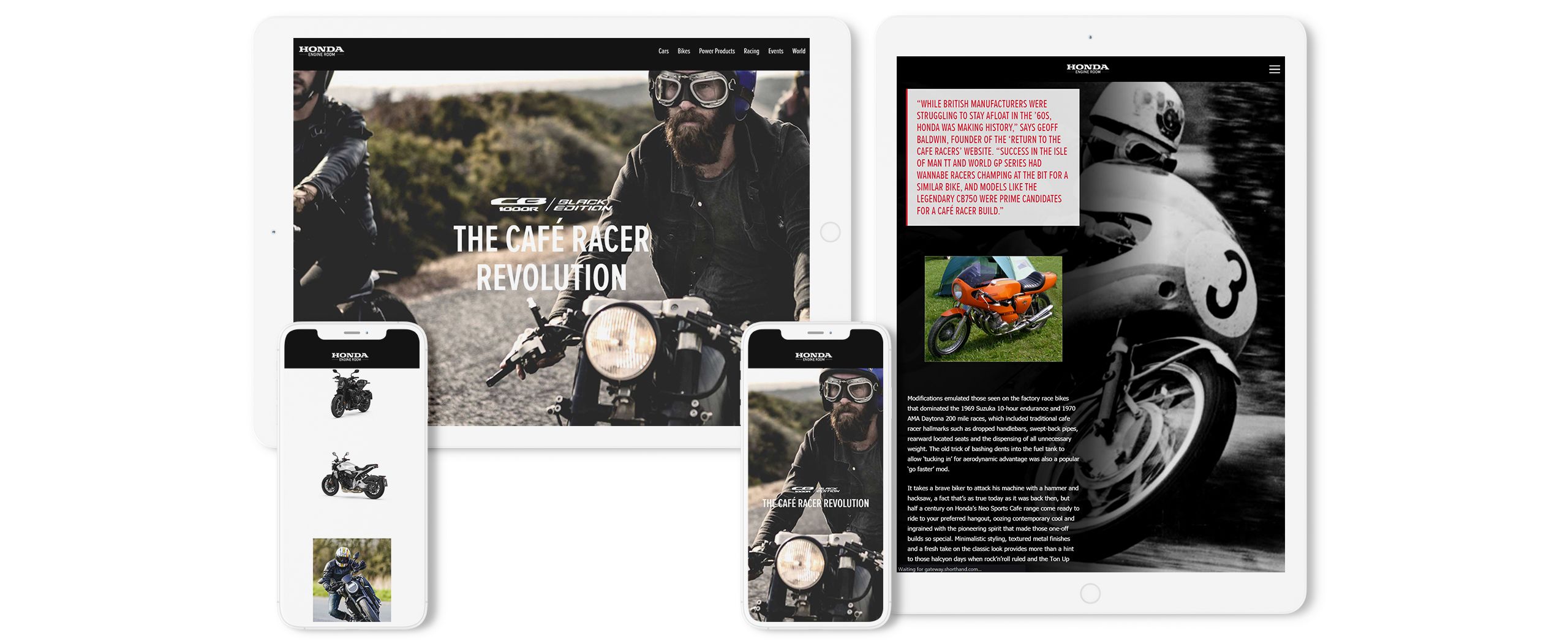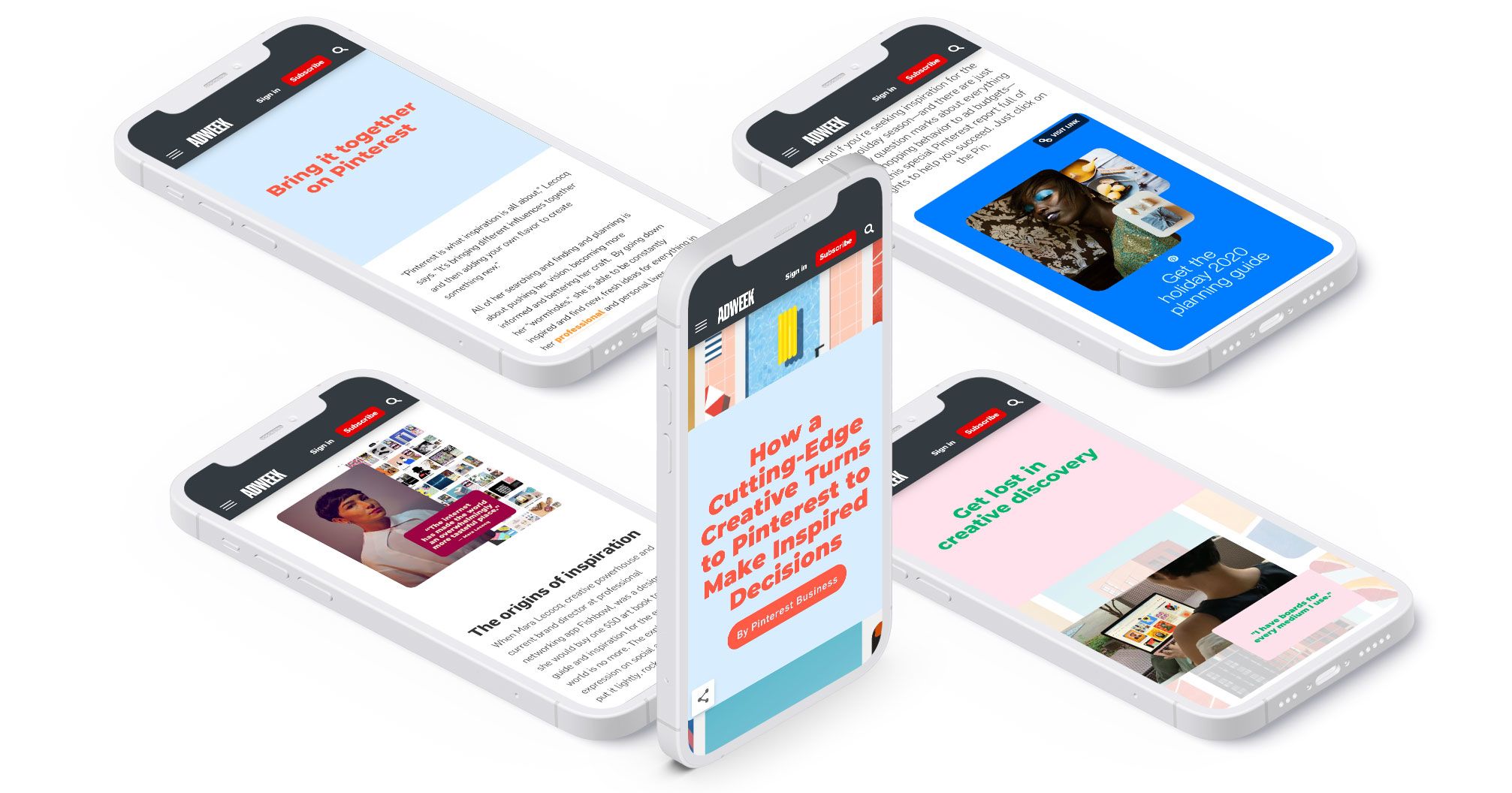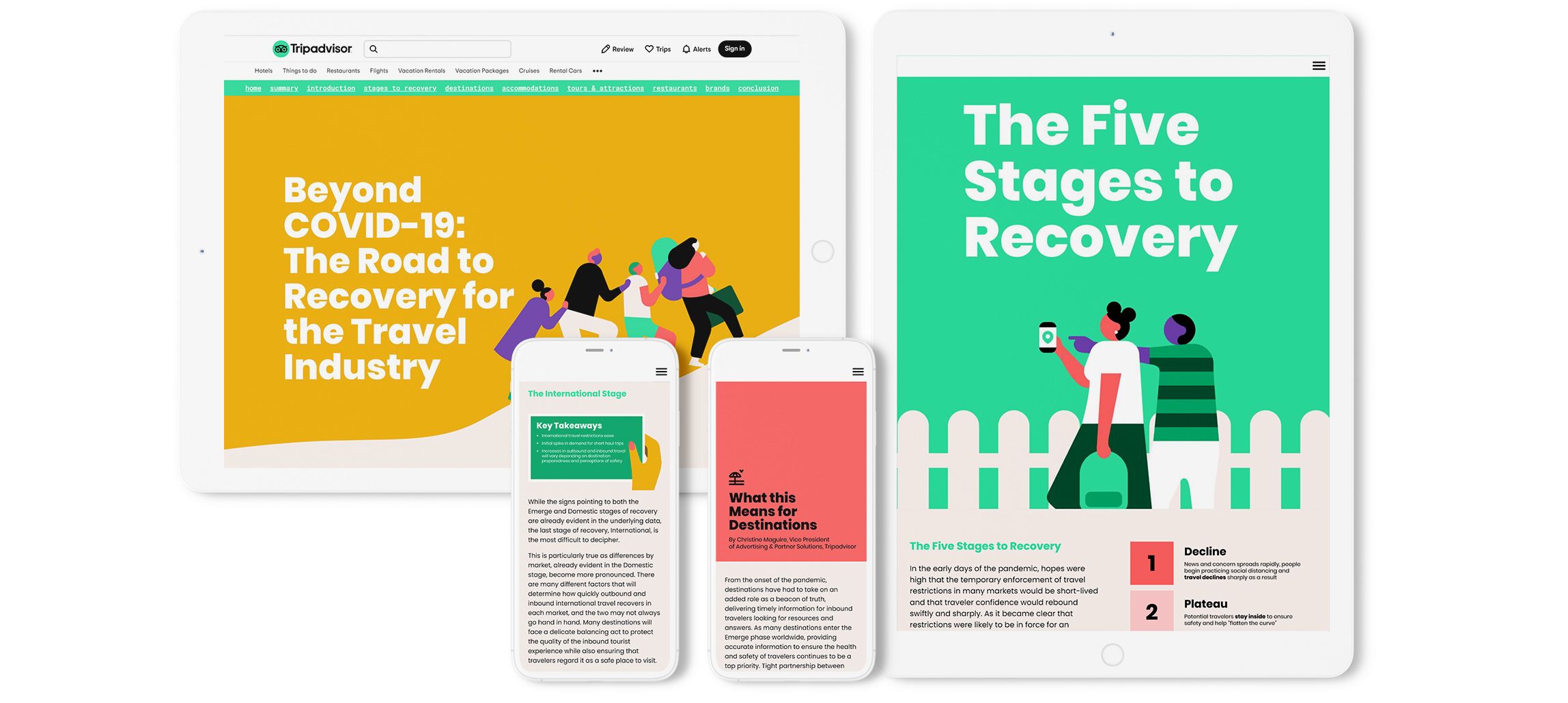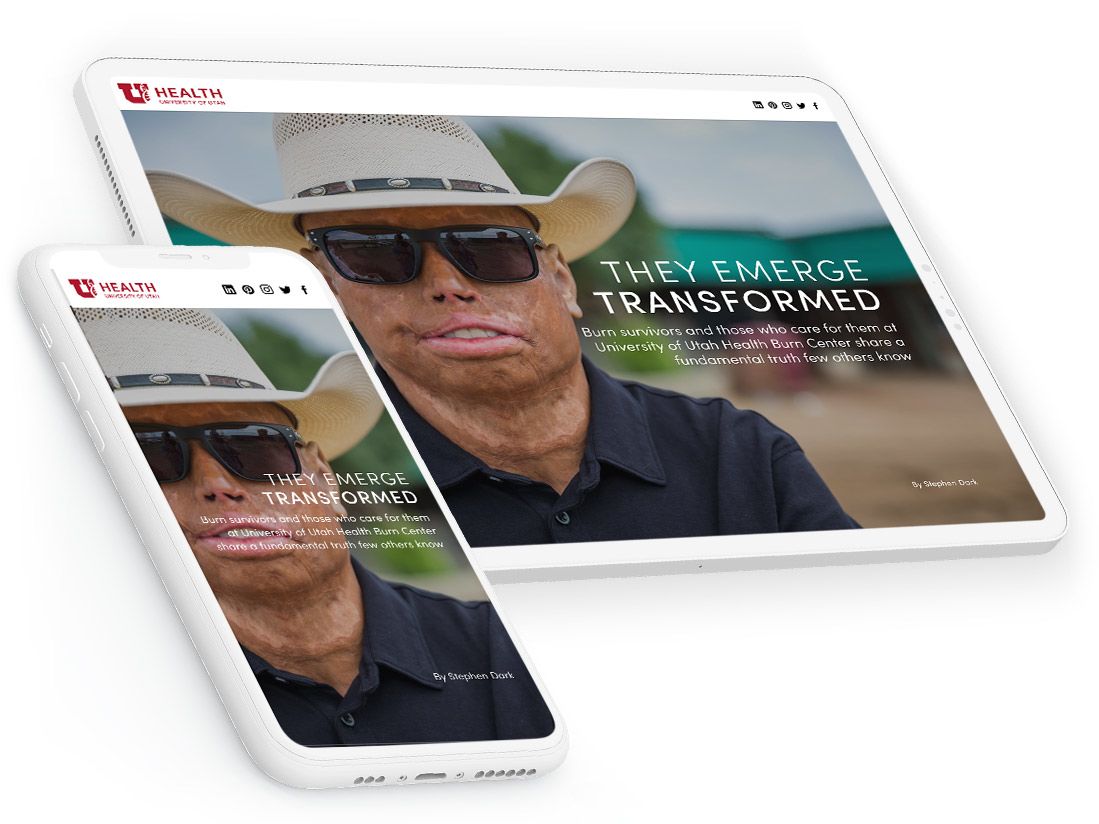Why publish longform content?

As the volume of content on the web grows, and our attention spans continue to wilt, it's become harder than ever to get noticed. The SERPs — that's the Search Engine Result Pages — are becoming more competitive. Most content, most of the time, fails to stand out from the crowd.
One popular tactic for digital marketing and content teams — following the lead of longform journalism — is to create longform content. Obviously, longform content is longer in terms of word count. But it also tends to be higher quality content, enjoying a greater investment in research, design, and editing.
It also generally gets better results, across a range of metrics, including organic traffic, engagement, and click-through-rates.
In this guide, we're going to show how investing in this type of in-depth content can reach more people, improve search engine rankings, and enhance your business’s reputation. We’ll cover:
- what longform content is
- the benefits of longform content
- the most effective types of longform content
- content strategy: longform versus shortform
- how to create longform content
- our favourite examples of stunning longform content
Start creating with Shorthand
It's the fastest way to publish beautifully engaging longform stories, digital magazines, reports, internal comms, and more.
What is longform content?

It might surprise you to learn that there’s no fixed definition of longform content. A few years ago, in the heyday of blogging, any piece of content over 1000 words counted as longform. But we’re seeing rapid inflation on content length. Some marketers like Neil Patel, founder of Crazy Egg, define longform as anything over a minimum of 4000 words.
That’s pretty hefty.
What we can say for sure is that the best-performing online content ranges between 2000 and 10,000 words.
There’s no fixed format for longform content. It’s often written content, but it can also include multimedia elements, including podcasts and audio effects, videos, images, animations, infographics, and more.
This means that whatever your business, audience, or resources, there’s sure to be a type of longform content that suits you.
Now, let's take a closer look at why you would want to invest in longform content.
What are the benefits of longform content?

There are lots of different reasons to produce longform content, depending on your business model and marketing strategy. This is just a quick summary — I’m sure you can think of more!
Search engine optimisation
For content marketers, the main benefit of creating longform content will be ranking on the first page of Google. Search engine algorithms are designed to value high-quality content, which often means longer content that fulfils the 'intent' of the search query. Generally, this means that Google and other search engines will reward relevant, up-to-date, and detailed content.
Backlinks
Yes, this is a subset of SEO — but it’s important enough to merit its own point. The perceived authority of your site can support your position in search rankings, give a boost to new content, and impress potential collaborators. The evidence: an analysis of 912 million blog posts. In general, long-form posts get more backlinks, which lead to higher visibility and authority.
User engagement
Again, this matters for both SEO and your brand more generally. Shorter content can get plenty of clicks, but it also has higher bounce rates and lower conversion rates. If someone from your target audience reads all the way through your longform content, they’ve qualified themselves as a great sales prospect. This is why media companies are increasingly investing in longer content, as we explain in our guide to attention and longform features.
Customer success
Longform content is useful for educating customers through your funnel — and helping customers succeed even after you’ve made the sale. This can include user guides, troubleshooters, and ideas for getting the most out of your products and services. Offering high quality content increases your value to customers.
Lead generation
Longform pieces such as books and whitepapers are often gated content. In order to access them, the reader has to share some information, such as an email address, which you can use to continue the sales process. Note, though: The data you request should be in proportion to the value you offer.
Monetisation
Newspapers, magazines, academic journals, think tanks, data collators… Many of these businesses monetise by asking people to pay for longform content. Paywalls have allowed publishers to move away from clickbait and the overpowering focus on raw traffic, and to instead generate revenue from subscribers. And as technology improves and consumer behaviour changes, we're seeing readers increasingly choosing to pay a subscription rather than sit through ads. Learn more in our guide to paywalls.
Wider content marketing strategy
As we outline in greater detail below, because longform content is so comprehensive, it’s also a good source of short form content. You can extract, repackage, and repurpose elements of longform content to share on social media or tempt readers into a conversion.
Now, let’s take a closer look at the most effective types of longform content.
The most effective types of longform content

These types of longform content work — that's why they're popular. However, they work in different ways; each type has different strengths and weaknesses.
Ebooks
Ebooks are great for specialist knowledge. They’re often used as lead magnets, collecting readers’ contact information in exchange for a download. Ebooks are often formatted as PDF files — despite the many limitations of PDFs for accessibility, analytics, and SEO. If you're looking at creating an ebook, consider publishing your chapters as individual web pages.
Pillar pages
A pillar page is a single blog post or article which covers a topic in depth, and serves as a hub for multimedia and links to other, briefer pages. This type of content is valuable for SEO and can be useful for customers — so long as they’re not overwhelming.
Longform articles
Longform articles are… pretty much what they sound like. A lengthy analysis of a topic, based on plenty of background knowledge and research. This includes longform features in journalism as well as content marketing.
Whitepapers and reports
'Whitepaper' is a term borrowed from official government communications. The purpose of a whitepaper is to help your reader make a decision, solve a problem... or run a country. Like ebooks, they’re often presented as PDF downloads — but not always.
These days, many of the most powerful examples of white papers are published as accessible and beautifully designed multimedia web pages. One great example comes from Tripadvisor, in this guide on the future of the travel industry following COVID-19.
Evergreens
Evergreens are similar to pillar pages, in that their primary function is usually SEO. An evergreen page should be comprehensive content, packed full of information on a specific topic and regularly updated. The goal: readers will keep finding this page until the end of time.
Digital magazines
Digital magazines are increasingly popular with both B2C and B2B companies. They’re longform, sure, but they’re also multimedia entertainment. Online magazines used to be a pain to read (remember those endless slideshows on fashion websites?), but as we point out in our guide to digital magazines, that’s changing fast.
Thought leadership
Longform content can demonstrate the expertise, industry knowledge, and original insights behind your brand. Everyone working in a business has a unique story to tell about their job. If you can tap into that, you’ll produce unmissable content.
Reports
As a business or nonprofit, there are some reports that you legally have to publish. But these reports are also an opportunity to engage and entertain your target audience. At Shorthand, we’ve seen some amazing annual reports which use the format to celebrate their success, thank their staff, and set the standard for their industry.
Content marketing strategy: longform versus shortform

If you’re reading this, chances are that you already produce shortform content. You might have dabbled in longform content too, but you’re most at home with quick blog posts and company updates. Making the jump to longer content can seem like a stretch.
But here’s the thing: longform content makes it easier to produce shortform content. It feeds back into your content strategy, giving you more resources, information, and ideas.
All the research and design that goes into a piece of longform content can be reused. It’s a time-worn maxim of content marketing that single-use content is wasted content. A single longform article can be the source of many more quotes, infographics, listicles, tutorials, webinars, step-by-step guides, short blogs leading to the main page, and threads on social media.
Those shorter pieces of content might be part of the same goal as the original, longform content. Or they might serve a different purpose, at a different stage of the marketing cycle. The most important thing is to have a clear understanding of the purpose of each piece of content.
Longform content is getting better

As we've mentioned above, some types of longform content have been traditionally published as PDFs. Other forms have been published as essentially 'long blogs', using the same design and publication process as short-form content.
With the rise of better content creation technologies — including digital storytelling platforms — we're witnessing how longform content is changing for the better.
These days, longform content tends to be immersive, accessible, interactive, responsive, and visually engaging, often using a range of multimedia assets.
Many longform pieces will also use scrollytelling techniques, including scroll-triggered animations. You can learn more about this in our introduction to scrollytelling, which outlines why interactive scroll-based storytelling works, and how to make it work for you.
Critically, these pieces have avoided the many pitfalls associated with PDFs. We outline them in greater detail in this guide to the slow decline of the PDF.
5 stunning longform content examples

Finally, let's dive into five case studies of some the best longform content on the web, from breaking news stories to industry deep-dives and life-changing research.
BBC Sport: A Murder the World Witnessed
The unjust death of George Floyd was one of the biggest news stories of 2020. BBC Sport covered the story from a unique angle: how the world of sport had reacted with protests, boycotts, and (hopefully) change.
In line with the topic, this longform article used an appropriately stark design of white text against a black background. It was illustrated with a mix of dramatic photography and graffiti-style portraits in vivid colours.
As readers scroll, the timeline moves on and more voices are added to the story. It’s a hugely impactful piece of reporting.
Honda: The Café Racer Revolution
Consumer brands like Honda are aimed at an expert audience. They know that their customers obsess over stats, specs and race times.
The Café Racer Revolution is a great example of longform content that gives the customer exactly what they want. Even the author of the piece is introduced with a stats card, like a racer being introduced on a television screen.
What’s more, this article packs a lot of information into a highly readable format, with quotes, interactive 3D images, and a few well-placed links. In other words... it’s really fun.
Adweek with Pinterest Business
One way to make producing longform content more manageable is to team up with a partner. That’s what Adweek and Pinterest Business did in this example of longform native advertising, in order to produce this deep-dive analysis of how creators use the social network for inspiration.
As you’d expect from anything with 'Pinterest' in the headline, this article is filled with pastel colours and eye-catching images. Screenshots from the app are overlaid with quotes and portraits of creators, reproducing the immersive experience of the app while sharing lots of information.
The piece finishes up with a list of immediate actions for creators and marketers to take. This is an example of content that’s designed to add value: it’s instructive for both Pinterest and Adweek’s audiences.
Tripadvisor: Beyond COVID-19
In this whitepaper, Tripadvisor combine effective design with data-driven research to discuss the post-COVID-19 recovery of the travel industry
The piece is headed with a navigation bar that covers different aspects of travel (destinations, attractions, restaurants and so on), so that readers can find the information that’s most useful to them.
Scrolling down, the whitepaper is clearly laid out with lots of headline statistics and section summaries. So as well as providing a detailed read, it’s also very scannable.
University of Utah: They Emerge Transformed
Longform content has always been part of university life. However, it’s only more recently that universities have started looking for ways to share their research with a more general audience.
This longform article from the Health department at the University of Utah showcases cutting-edge research, while putting the voices of burns patients front and centre.
The report is strikingly illustrated with personal portraits of burns survivors, images of the treatment centre in Utah, and photographs of colourful quilts. These quilts are used to keep patients warm, provide some relief from the stark shades of the hospital, and ultimately provide a metaphor of piecing lives back together.
It’s a beautiful visual motif which holds the entire article together.


